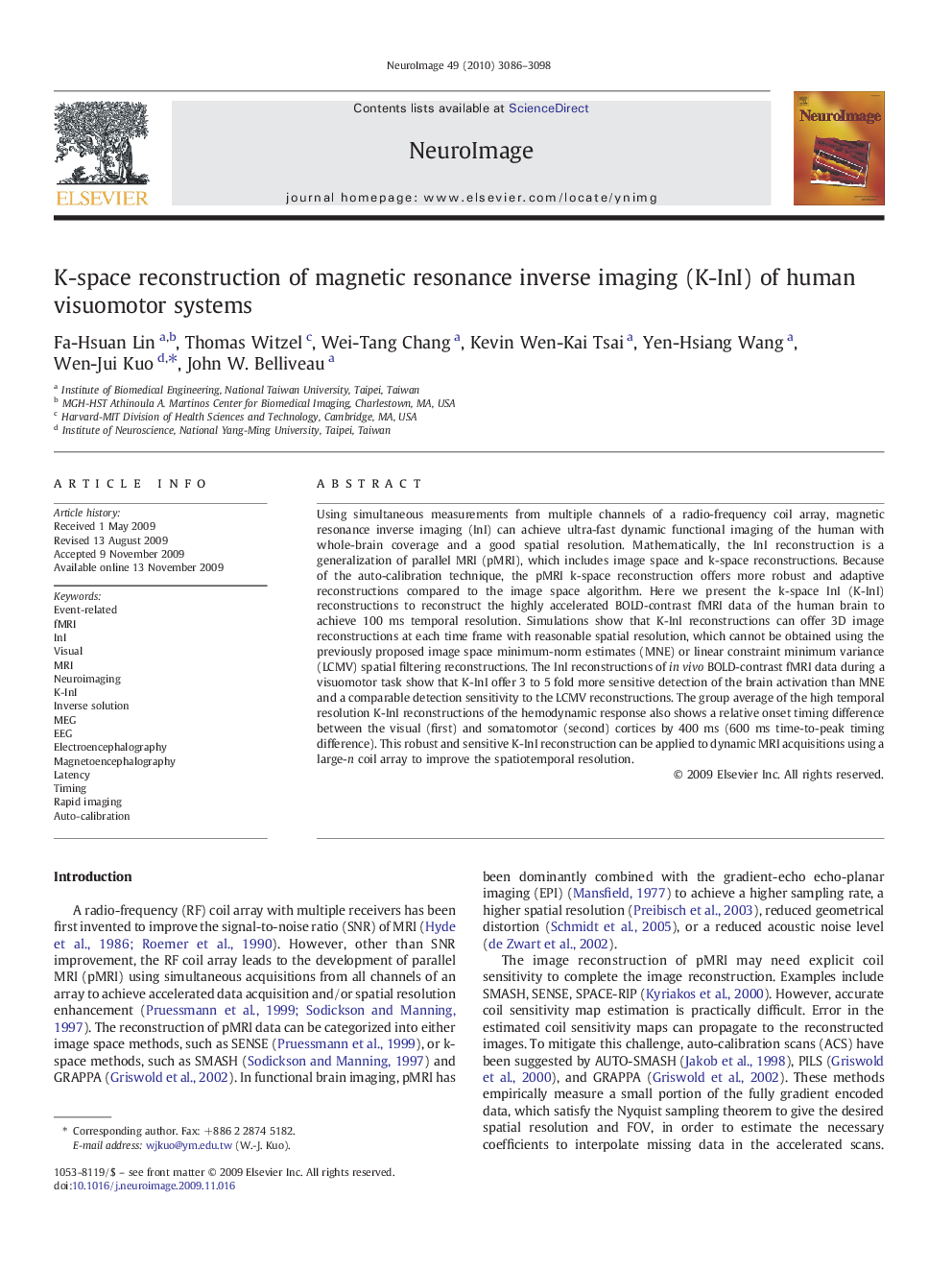| Article ID | Journal | Published Year | Pages | File Type |
|---|---|---|---|---|
| 6037402 | NeuroImage | 2010 | 13 Pages |
Abstract
Using simultaneous measurements from multiple channels of a radio-frequency coil array, magnetic resonance inverse imaging (InI) can achieve ultra-fast dynamic functional imaging of the human with whole-brain coverage and a good spatial resolution. Mathematically, the InI reconstruction is a generalization of parallel MRI (pMRI), which includes image space and k-space reconstructions. Because of the auto-calibration technique, the pMRI k-space reconstruction offers more robust and adaptive reconstructions compared to the image space algorithm. Here we present the k-space InI (K-InI) reconstructions to reconstruct the highly accelerated BOLD-contrast fMRI data of the human brain to achieve 100Â ms temporal resolution. Simulations show that K-InI reconstructions can offer 3D image reconstructions at each time frame with reasonable spatial resolution, which cannot be obtained using the previously proposed image space minimum-norm estimates (MNE) or linear constraint minimum variance (LCMV) spatial filtering reconstructions. The InI reconstructions of in vivo BOLD-contrast fMRI data during a visuomotor task show that K-InI offer 3 to 5 fold more sensitive detection of the brain activation than MNE and a comparable detection sensitivity to the LCMV reconstructions. The group average of the high temporal resolution K-InI reconstructions of the hemodynamic response also shows a relative onset timing difference between the visual (first) and somatomotor (second) cortices by 400Â ms (600Â ms time-to-peak timing difference). This robust and sensitive K-InI reconstruction can be applied to dynamic MRI acquisitions using a large-n coil array to improve the spatiotemporal resolution.
Keywords
Related Topics
Life Sciences
Neuroscience
Cognitive Neuroscience
Authors
Fa-Hsuan Lin, Thomas Witzel, Wei-Tang Chang, Kevin Wen-Kai Tsai, Yen-Hsiang Wang, Wen-Jui Kuo, John W. Belliveau,
